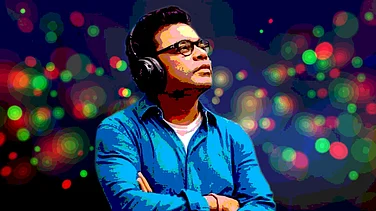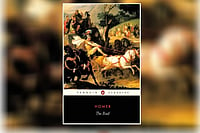Harry Potter fans are mostly familiar with J. K. Rowling’s rags to riches story. What some of them may not know is that initially she wanted to study English literature but eventually ended up studying Classics and French. In her 2008 speech delivered at Harvard University on ‘benefits of failure’, she revealed that her parents would have found it hard to name a subject ‘less useful’ than Classics or Greek mythology.
However, she acknowledged the instrumental role played by Seneca, Plutarch, and other ancient authors in shaping her career. A deep understanding of Greco-Roman literature helped her create a world of fantasy that mesmerised readers world over.
It is equally true that not everyone who studies classics becomes J. K. Rowling. For many people, classical languages are useless. The playful narrator of Fakir Mohan Senapati’s classic Odia novel Six Acres and a Third (1896) puts it ironically, ‘English Pundits say, “Sanskrit is a dead language.”
We would go even further: “Sanskrit is a language of the half-dead.” But many know that dead languages can be revived, driven by the belief that judging a language or knowledge on the yardstick of utility itself is a useless exercise. Hebrew was at some point considered a dead language but Israel not only revived it but also made it the country’s official language.
The Oxford academic Nicola Gardini in his book Long Live Latin: The Pleasures of a Useless Language (2019) offers a personal and passionate defence of classics. He argues that we can learn about the vital aspects of life such as love, beauty, loss, eloquence, and purpose of human existence from the ancient authors. These significant lessons from the past indisputably illuminate our present. Modern readers believe that ancient authors still have something refreshingly new to convey to us, which will bring solace amidst the chaos.
There were reports of soldiers carrying a copy of Homer’s Iliad in the trenches during the First World War. The US war veterans use Homer as a therapy to cope with the trauma of war. It is quite common to see the Mahabharata being evoked in contemporary debates on caste atrocities, gender discrimination, political dynasties, good governance, and above all, Rajdharma.
The popularity of classics has remained unaffected by the belief that classical languages are dead. It is mainly because the number of people reading classics in classical languages is minuscule. After all, how many of us read Vyasa and Valmiki in Sanskrit or Virgil and Cicero in Latin? Their works could transcend time and space due to translation without which the idea of world classics or even world literature would have been inconceivable. In several cases, we are familiar with them without even reading their works. ‘No Hindu ever reads the Mahabharata for the first time,’ writes A. K. Ramanujan in his seminal essay ‘Repetition in the Mahabharata’.
In India, children get to know the story of Vyasa’s epic in bits and fragments through oral traditions, grandma’s stories, comics, serials, and local performances.
They don’t feel the need to read it. Some read the abridged version whereas there are only a few valiant readers who have the tenacity to go through the entire text which is eight times the size of the Iliad and the Odyssey put together. And when they do so it becomes an act of rereading, for they are already familiar with the tale.
‘The Classics are the books’ writes Italo Calvino in ‘Why Read the Classics?’ (1986), ‘of which we usually hear people say: “I am rereading…” and never “I am reading…”’ What is strikingly similar in Ramanujan and Calvino is an emphasis on rereading or familiarity with the story before actually reading the text. But isn’t it humanly impossible to be familiar with all the classics of India, Japan, China and the rest of the world? It is inarguably true that as an outcome of years of cultural exchange, transactions and translations, texts and traditions of different parts of the world influenced one another. For instance, several translations of the Panchatantra traveled all over the world since the sixth century AD and influenced Boccaccio, Chaucer, and other storytellers. The concluding section of T. S. Eliot’s poem The Waste Land (1922), is borrowed from a conversation that takes place between Lord Prajapati and his three sons – God, Demon and Man – in the Brihadaranyaka Upanishad. The influence of the Bhagavad Gita on Robert Oppenheimer is well known. When the nuclear scientist witnessed the first detonation of the nuclear bomb in 1945, he had supposedly quoted from the Gita: ‘Now I have become Death, the destroyer of worlds.’
For all these examples of cultural exchange between the East and the West, a lot of ground is yet to be covered as the dominant idea of the classic has been European and Eurocentric. The word classical is of European origin indeed.
It comes from the Latin word classicus which meant recruits of the first class, the heavy infantry in the Roman army. In later years, the term began to be used for any work indicating greatness, permanence, or timelessness. The question ‘What is a Classic?’ fascinated several authors and literary critics, including Augustin Sainte-Beuve, T. S. Eliot, Frank Kermode, and J. M. Coetzee.
The 19th-century French critic Sainte-Beuve made one of the earliest attempts to draw an exhaustive list of classical authors. As expected, he placed Homer at the top like a God, followed by ‘three Homers’ – Valmiki, Vyasa, and Ferdowsi. The classification was, as any discerning reader may point out, problematic as well as political.
One of the biggest challenges that await us while reading classics today or drawing a list of such texts is to come out of this Eurocentric model and appreciate the representative authors of different languages without falling into the trap of cultural chauvinism. Perhaps while doing so we would be able to dissociate the word classics from class and get rid of the elitism attributed to it both etymologically and historically. Each language has a Vyasa, a Homer, a Sappho, a Khayyam, the fountainhead of all the literature it has to its credit. This column is driven by a desire to analyse the classics of different cultures and make them accessible to readers.
The purpose of this series is to discuss a wide range of classics from The Gilgamesh to Gulliver’s Travels, from the Mahabharata to Six acres and a Third with a focus on their ability to speak to us eloquently even today.
(Lalit Kumar is a translator and columnist. Currently, he teaches English at Deen Dayal Upadhyaya College, University of Delhi.)























